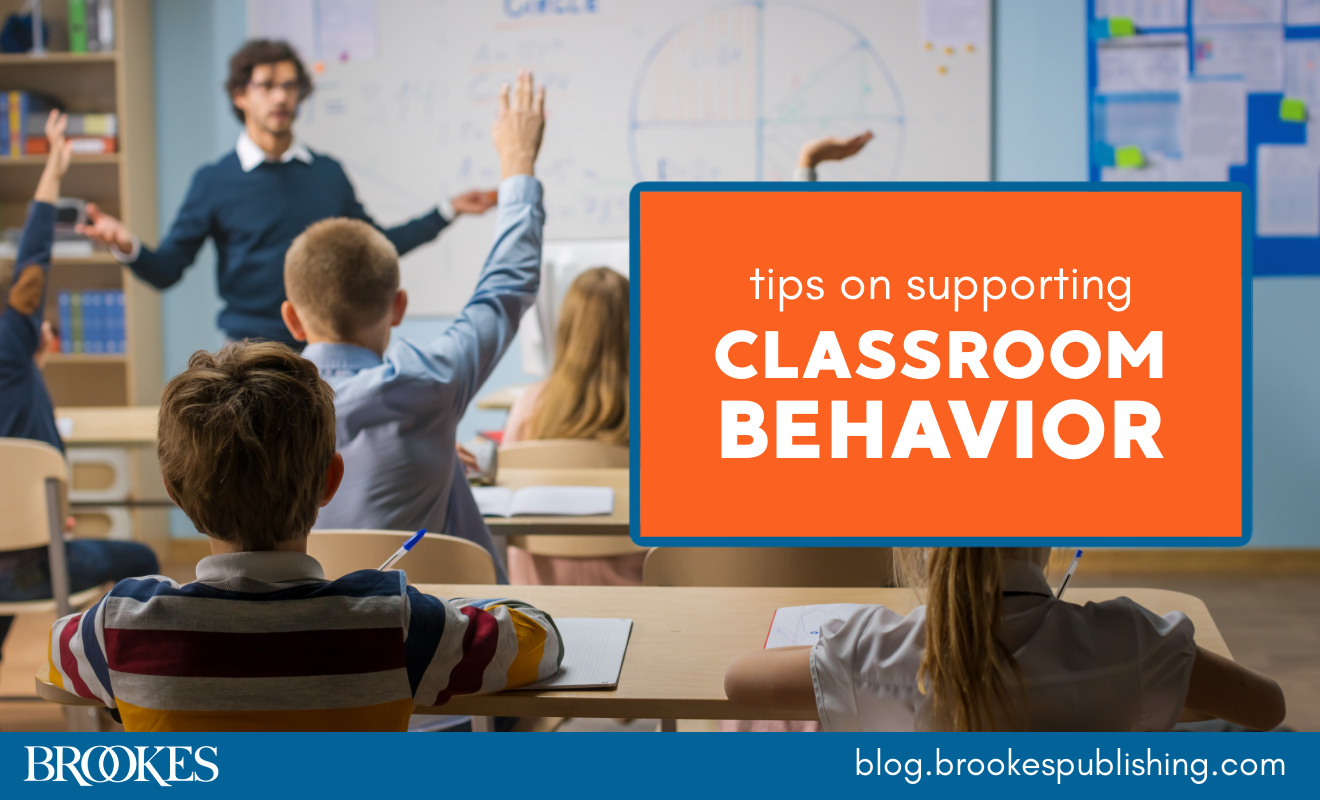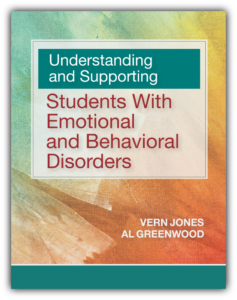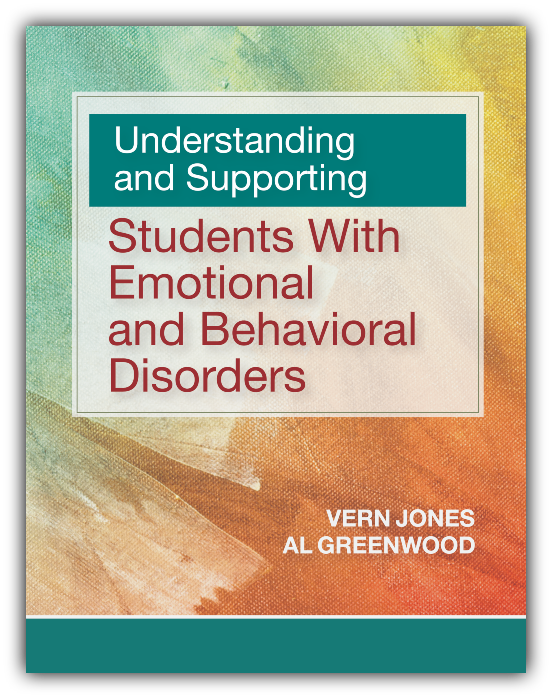16 Tips for Helping Students Meet Classroom Behavior Expectations
May 2, 2024
 All students benefit from positive classroom supports that will help them meet their teacher’s behavior expectations and reach their academic goals. For students with serious emotional and/or behavioral disorders (EBD), effective supports are even more vital to their success in school.
All students benefit from positive classroom supports that will help them meet their teacher’s behavior expectations and reach their academic goals. For students with serious emotional and/or behavioral disorders (EBD), effective supports are even more vital to their success in school.
As a teacher, how can you modify your classroom environment and instruction to meet the needs of students who struggle to meet behavior expectations? Excerpted and adapted from Understanding and Supporting Students with Emotional and Behavioral Disorders by Vern Jones & Al (Skip) Greenwood, today’s post offers 16 tips that will help you support positive behavior and learning—for students with EBD and for their peers, too.
- Start by examining your classroom arrangement. Ensure that your classroom is set up so you have good visual and physical access to all students.
- Consider your classroom seating arrangements. Who is seated next to students whose behavior is of concern? Provide preferred seating options such as carrels, dividers, or a seat close to a peer model/tutor.
- Remove distractions prior to beginning academic work. Examine potential distractions such as the temperature, lighting, and spacing in your classroom. Place the student where there are fewer visual or auditory distractions.
- Review your daily schedule to ensure there are opportunities for breaks, goal setting, and reflection. Create a quiet/break area in your classroom for learners to use when they become stressed.
- Review the quality of transitions in your classroom, and whether behavior challenges arise during transition times. Consider ways to make your transitions more efficient.
- Think about how to support successful completion of work to reduce students’ feelings of stress and frustration. Determine whether your student is able to complete the work at a high rate of accuracy and in a timely manner. Make adjustments as needed to ensure that the student experiences a high rate of success—for example, make modifications to the length and/or difficulty of assignments.
- Engage the student in goal setting to keep them focused on learning. Meet with your student as appropriate for the grade level to discuss academic goals and methods the student will be using. Have the student set realistic goals regarding the amount of work to be completed, time to complete the work, accuracy, and so forth. Have students take a break when they have reached a goal.
- Help learners with organizing their work. Add structure such as highlighting work they will be doing, highlighting key concepts, providing manipulatives, and so forth.
- Increase engagement by allowing the student to make choices regarding their academic work. Offer variety in how the student shows what they’ve learned (e.g., presenting orally, sharing with others, incorporating art and/or movement).
- Consider providing support through small-group and/or one-on-one instruction by a teacher, instructional assistant, peer tutor, cross-age tutor, or volunteer. Increase the amount of time spent in dyads, triads, and other forms of collaborative learning.
- Carefully monitor peer interactions to ensure that the student is not a victim of bullying.
- Listen to your students’ ideas about what will help them. Ask learners to share their insights about instructional approaches they believe will support their learning and positive behavior. Ask them to describe ways they would like peers and adults in the school to interact with them or respond differently.
- Examine your use of behavior-specific feedback given to the student. Review your ratio of positive to negative statements to the student and decrease the rate of teacher attention for undesired behavior.
- Empower learners to advocate for themselves. Teach your students how to communicate clearly when they feel their rights are being violated.
- Assist the student in monitoring and sharing their progress. Incorporate daily or weekly progress reports to a school-based mentor and/or parents. (You may want to ask students to choose their own school-based mentor.)
- Ensure that all adults are consistently communicating high expectations to the student.
When students feel valued and supported by their teachers and their peers, and when they’re involved in engaging instructional activities, their behavior will often be positive. Use the tips in this post to respond to the academic and social support needs of your students—including those with EBD. And for more in-depth guidance on helping students with emotional and behavioral disorders succeed in school, add today’s book to your professional development library.





Write a Comment
Your email address will not be published. Required fields are marked *
Post a Comment